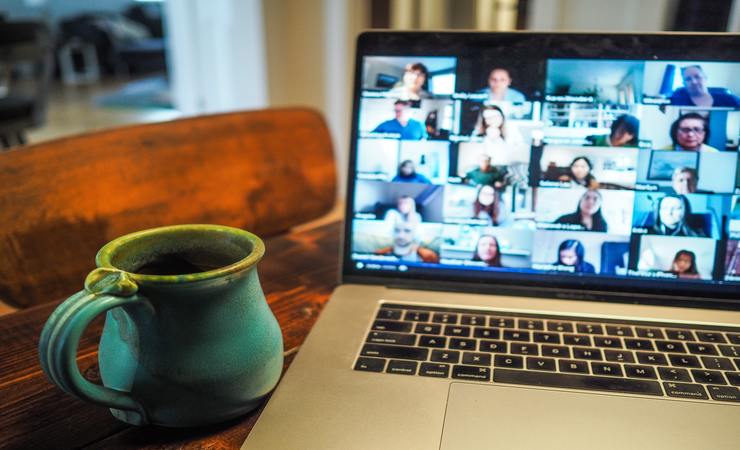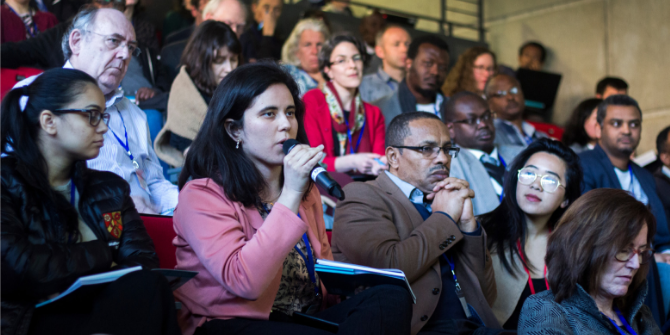Research seminars are a foundational part of academia and an important medium for communicating new ideas and research. However, national lockdowns and social distancing regulations have required research seminars to be translated at speed into digital virtual environments, for which they are not always well suited. In this post Peter Vincent discusses the challenges faced by academics in creating virtual seminar series and suggests how using Cassyni, a new tool developed by the founders of Mendeley, Publons and Kopernio, researchers might develop hybrid approaches to research seminar series that are more effective, inclusive and environmentally sustainable than the previous in-person seminar format.
Research seminars have been part of academia for centuries. They play a critical role in the academic discovery process: helping to develop new ideas, increase impact, forge connections, and build communities. The global COVID-19 pandemic rapidly forced seminars to go virtual, bringing into the academic mainstream now ubiquitous video-conferencing tools such as Zoom. There are many benefits of virtualisation: increased attendance, lower costs, reduced greenhouse gas emissions, and significantly a paradigm shift in inclusivity. However, as I – and no doubt many other academics – discovered last year when setting up online seminar series from scratch, virtualisation also brings new problems.
The challenge of virtual seminars
The first problem I encountered was the number of moving parts associated with organising a seminar series: keeping track of speakers, collecting abstracts and biographies, promoting events, scheduling slots, recording privacy and sharing preferences etc. There was no single tool to manage these moving parts effectively and efficiently.
The second problem I found was time zones, and the need for asynchronous engagement. Having a global audience is great, but not everyone is awake at the same time, and I could not find a way to ensure conversations around seminars were kept alive across time zones.
The final problem was around capturing knowledge in a way that might enable seminars to have longer-term impact. Colleagues were recording videos of seminars and hosting them in Google Drives, on Dropbox, or on personal YouTube channels, cross-linked from their personal websites or blog posts. None of these approaches felt like a sustainable solution either for me, or indeed the wider academic community. It felt like there were clear benefits to making recordings ‘more formal’, persistent and discoverable, and ideally citable and linked to the rest of the academic ecosystem.
Introducing Cassyni
It turns out I was not alone. After discussions with colleagues around the world it became clear that others too were facing the same problems. So, at the start of this year, myself and previous co-founders of Mendeley, Publons and Kopernio teamed up to build a new platform called Cassyni for organising, running, publishing, and indexing academic seminars.
Cassyni features an integrated organisational tool, designed specifically for research seminars that amongst other things, automatically keeps track of speakers, collects abstracts and biographies, promotes events, schedules slots, manages privacy and sharing settings (Fig.1).
This tool integrates with Zoom to run the live event, which Cassyni augments with an asynchronous Q&A feature, so discussions can keep going across time zones, even after the seminar ends (Fig.2).
Finally, Cassyni provides an easy-to-use online interface for editing recordings. These recordings can then be published on Cassyni alongside the slides and Q&A etc. as a citable asset with a formal DOI in our indexed content library (Fig.3) so knowledge is not lost, and impact, reach and engagement are maximised. Sensitive, or early work can also be shared privately with select colleagues via a set of granular privacy controls.
Academics can also list upcoming or historical seminars on Cassyni even if they are not organised and run on the platform. Our vision is to build the world’s biggest indexed and searchable library of research seminars – think something like Web of Science, but for research seminars.
Cassyni is already in use at institutions around the world. I have used it to run my seminar series at Imperial College, which you can explore here. This series alone already has close to 100 subscribers, and is helping me to build a community and increase the impact of my research. Other series are being run on a range of topics, from bioengineering through to rare earth nitrides, and as part of Cassyni’s first institutional agreement the Victoria University of Wellington is planning to launch various new seminar series this autumn, on topics in humanities and the sciences. Journals have also started using the platform to run seminar series that feature recent papers, for example this series run by the Journal of Computational Physics. I think there is a real opportunity here for Cassyni to help journals drive engagement, build communities around their content, and add value for authors.
Virtual is the opportunity
In 2012, soon after I started my faculty position at Imperial College, I was invited to give a seminar (indeed the same seminar) at various institutions around the world. Many thousands of pounds and a big carbon footprint later; I had delivered the seminar in Cambridge, Beijing, London, Swansea, Barcelona, Kassel, and Brussels. But there are no formal records of these talks, and my ‘seminar tour’ was only possible because I had the resources and could make the time to travel (as a father of two small children repeating the tour now would be much more of a challange).
Contrast this experience with that of a current graduate student in my group, who recently delivered a seminar about their work using Cassyni. Their talk was promoted to subscribers, and attended live by around 40 motivated and interested academics from all over the world, several of whom were leaders in their field. The recording, published on Cassyni, was then promoted on social media and subsequently watched 300+ times, leading to further engagement via Cassyni’s asynchronous Q&A. Finally, Cassyni assigned the seminar a DOI. This has already been used to cite the talk in an academic report, and it has been referred to several times in online forums and blog posts, giving the seminar a meaningful and lasting place in the wider academic discourse.
So which approach is the best? Clearly I got to meet people in person, which has significant value and should never be discounted, whereas my graduate student did not. However, I would argue that overall the reach, impact, and engagement of my graduate student was much greater, and for a much lower economic and environmental cost.
As with most things in life, the optimal solution is likely a sensible balance; a mix of both virtual seminars and in-person discussions, as well as mixed-mode seminars delivered both online and in-person simultaneously (Cassyni fully supports these). What is clear to me is that seminar virtualisation, delivered through tools like Cassyni, has created amazing opportunities and new ways of working that will continue to play an important role in academic communication and collaboration post-covid.
Our long-term vision is to create a more inclusive and connected ecosystem that brings together millions of research seminars, whilst saving researchers time and effort. However, as a new start-up our immediate aim is to find our audience and further validate and improve our product. So – if you are reading this, and have a research topic or project you are passionate about, why not use Cassyni to launch a seminar series today!
Note: This article gives the views of the author, and not the position of the LSE Impact Blog, nor of the London School of Economics. Please review our comments policy if you have any concerns on posting a comment below
Image Credit: Adapted from Lucas Law via Unsplash.










